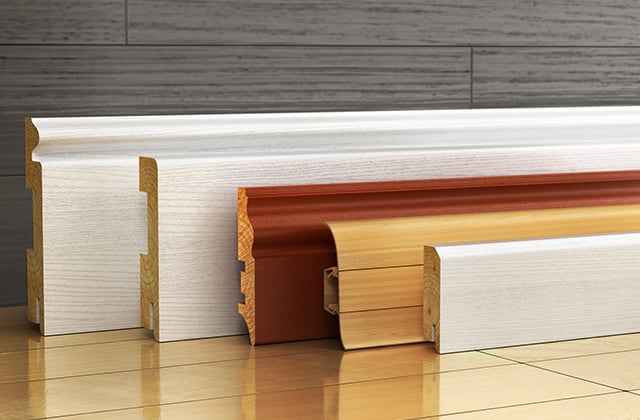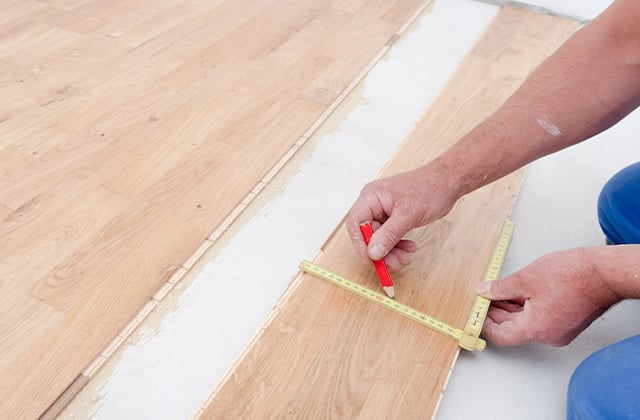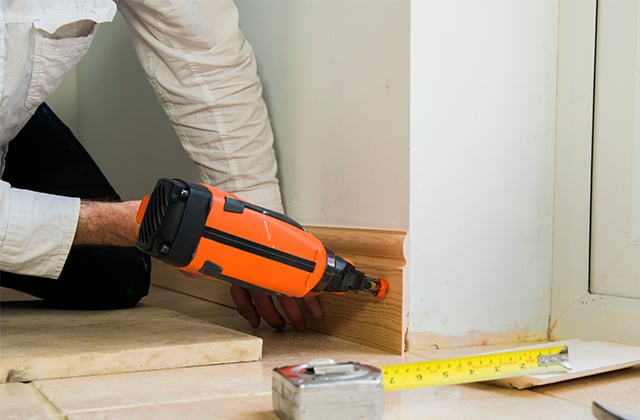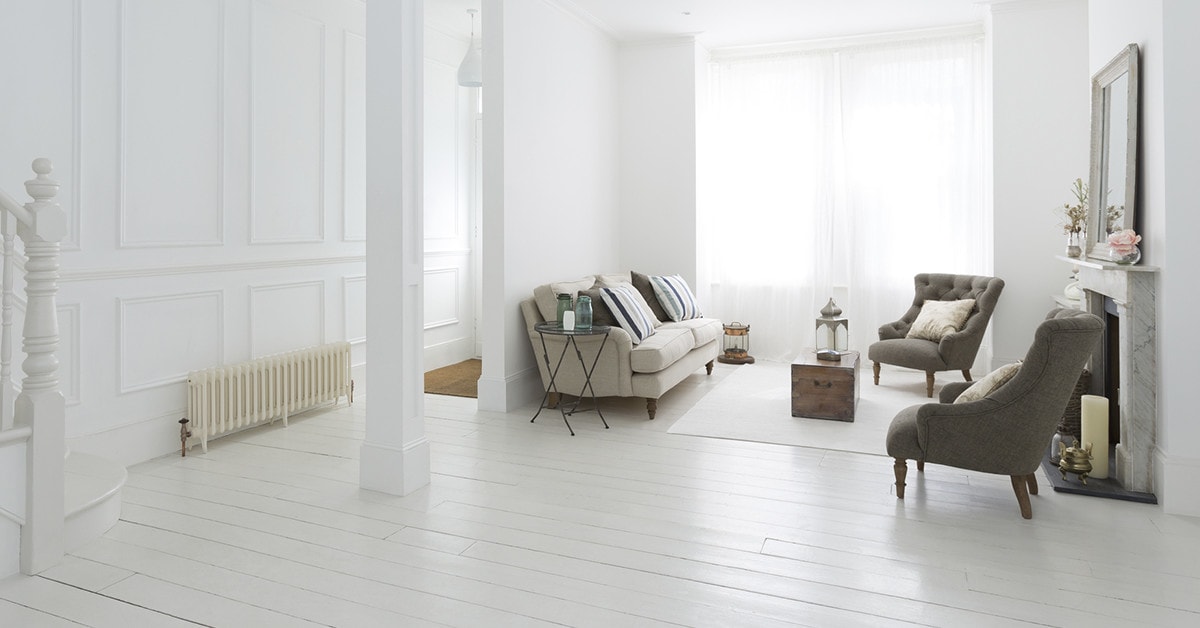1
Measuring
- To determine the amount of moulding you need, measure each straight section of the wall and add together. Include an additional 10% to account for cutting waste. If there are obstructions that prevent you from installing mouldings—such as a fireplace—don’t forget to subtract them from the total length.
- Remember when measuring for baseboards and crown mouldings that the outside corners must extend past the actual wall to account for mitred edges.
- In most newer homes, studs are placed 16" on centre. Once you’ve located the first stud, you might be able to find the others simply by measuring from the first stud.




















